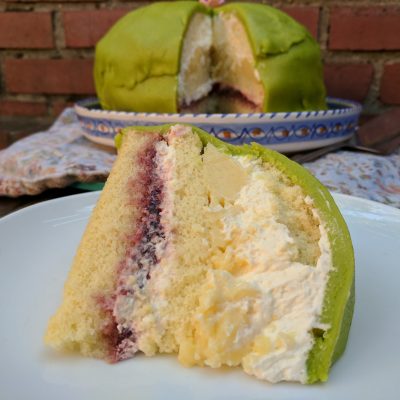
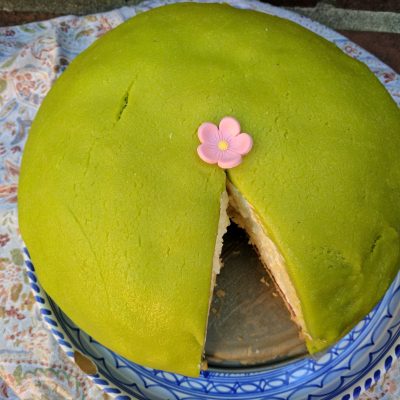
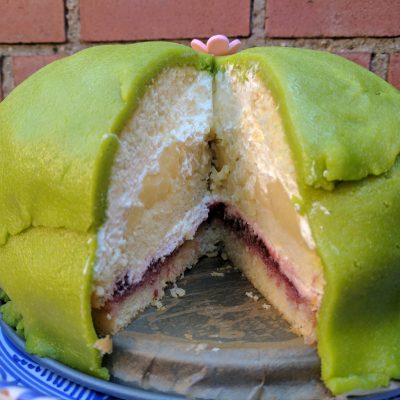
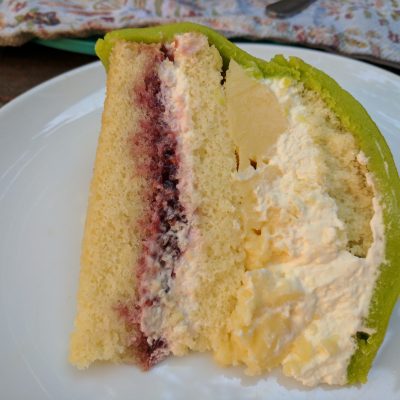

This one holds a special place in my heart, probably because this is how I remember princess cake:
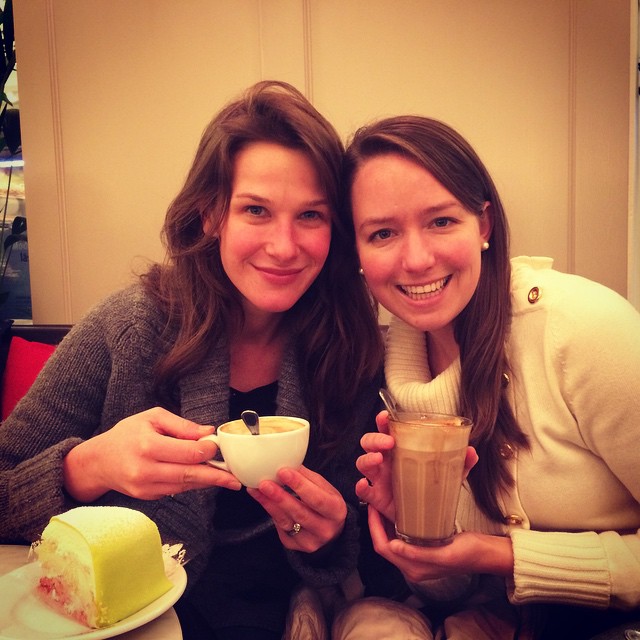
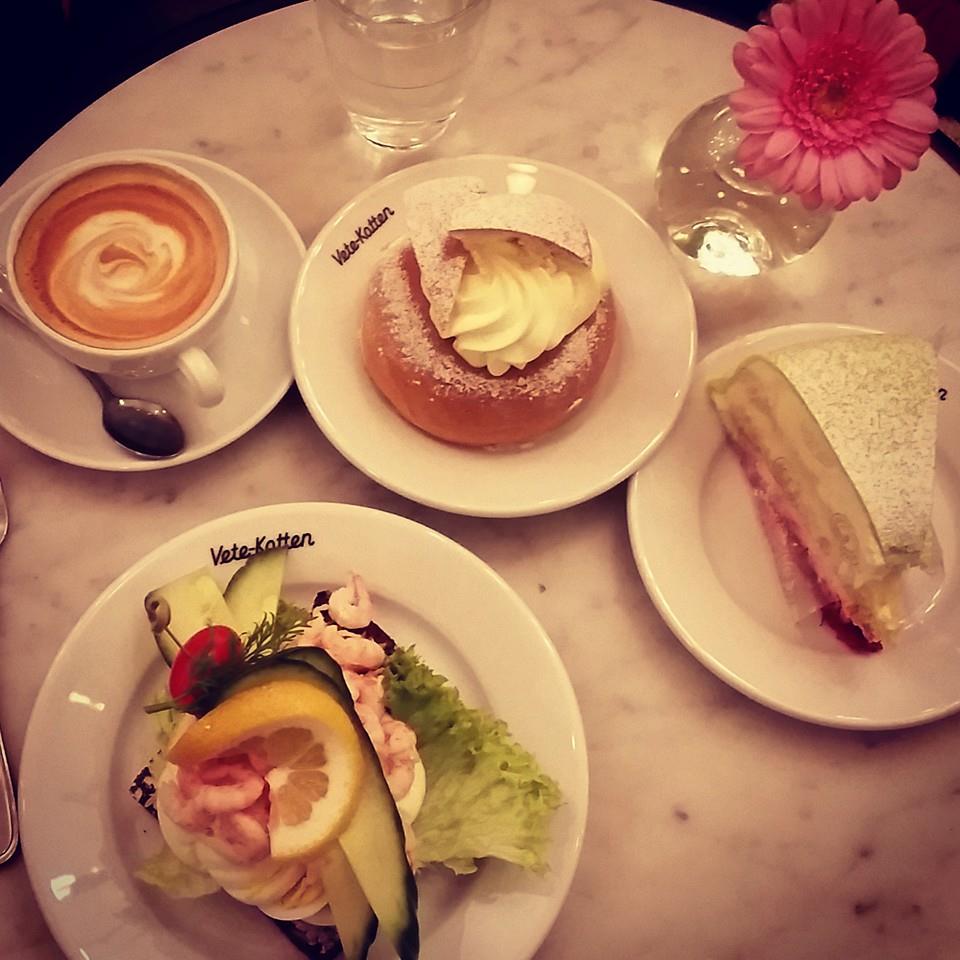
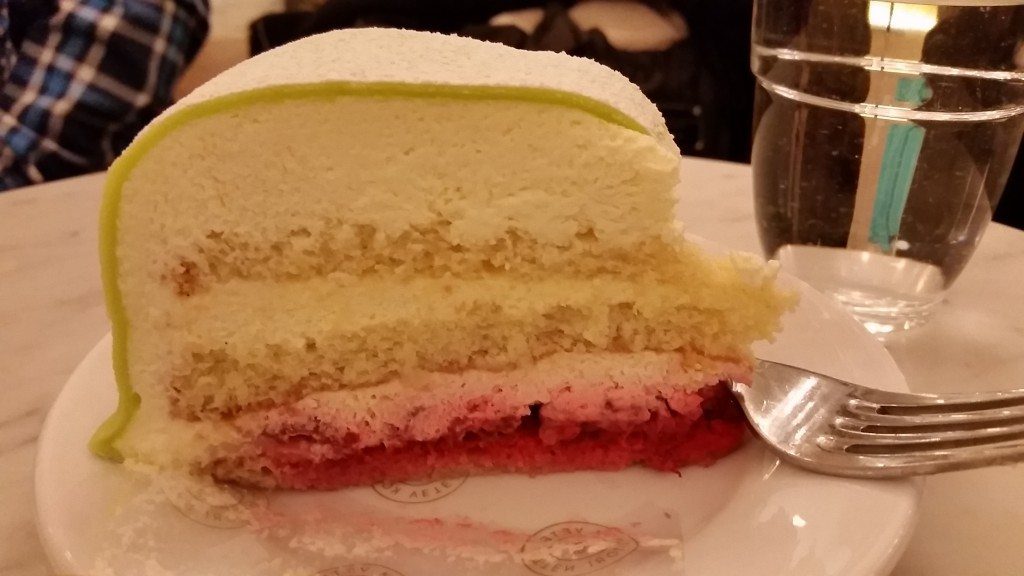
At a small cafe in Stockholm with my dear friends the Abbondantes during what was an amazing galavant across Europe. I remember walking the streets of Stockholm – probably looking for some place to find a hot glogg because it stinkin’ COLD AF – and seeing this strange green cake in the window of every bakery.
Mike explained that this was a princess cake, and that they were pretty much ubiquitous across Sweden. He also explained fika, which is taken near daily as a break from work or study and is as much as a social institution in Stockholm as happy hour is in D.C. Fun fact: “Fika” meaning coffee break is an example of 19th century back slang, in which syllables of a word were reversed, deriving fika from kaffi, an earlier variant of the Swedish word kaffe (“coffee”). Anyways, fika is often accompanied by pastries – which brings us back to this princess cake.
So how did this unique cake come to be? The recipe is attributed to a Swedish home economics teacher named Jenny Åkerström who taught at an all-girls school in Stockholm; her students included three Swedish princesses. In 1948, she released a cook book entitled “Prinsessornas Kokbok: Husmanskost och Helgdagsmat” (The Princesses Cookbook: Home Cooking and Holiday Food). This is where the recipe for the first princess cake appeared, although it was referred to as Grön Tårta or “green cake.” It’s assumed the name change was due to the Swedish princesses’ fondness for the cake, which is fortunate because me thinks “princess cake” is a much more appealing name.
Recipe Source: Global Table Adventure
|
1
Done
|
For the MarzipanPlace the almond flour and powdered sugar in a food processor and pulse until combined and any lumps are broken up. Add the almond extract and pulse to combine. Add the egg white and process until a thick dough is formed. Mix in the green food gel a little at a time, careful not to add too much - you want a lime green, not a dark green. |
|
2
Done
|
For the CakePreheat the oven to 350F. Line an 8" cake pan with parchment paper and grease the sides - I find a spring form pan is the easiest to work with, but a standard cake pan will do. Whisk together the flour and baking powder in a medium bowl. In a standing mixer, whip the eggs with the sugar on high speed until fluffy and pale yellow. Stream in the water, then fold the flour mixture into the eggs. Pour into prepared cake pan and bake about 40-45 minutes, or until an inserted toothpick comes out clean. Let cool completely. |
|
3
Done
|
For the CustardHeat up the milk, vanilla and sugar in a medium sauce pan. Meanwhile, whisk together the yolks and cornstarch in a medium bowl. When the milk is hot, whisk a little at a time into the yolk mixture, taking care not to curdle them. Pour the mixture back into the sauce pan, return to medium heat and cook until thickened, whisking often so that it doesn’t clump up or stick. Set aside until cooled to room temperature, preferably poured onto an 8″ plate. This will make your job easier later, as it’s a bit thicker than the spreadable custard. |
|
4
Done
|
For the CreamBeat the cream and powdered sugar until stiff peaks form. |
|
5
Done
|
To Assemble |
|
6
Done
|
To Assemble |
|
7
Done
|
To Assemble |
|
8
Done
|
To Cover with MarzipanThis is the hardest part. Place the marzipan between two sheets of parchment paper and roll out in a circle - you might want to measure your cake after you assemble it with a tape measure and make sure you've rolled out hte marzipan to the appropriate size. My other challenge is that the circle was larger than the parchment paper, so I had to layer it in a criss-cross. Remove the parchment paper at the very end and roll it smooth to get rid of any lines the parchment paper may have pressed into the marzipan. Carefully transfer the marzipan over top of the cake, smoothing the edges and wrapping around the sides gently. Top with a pink rose in the center. Refrigerate until ready to serve, although you will want to give it about an hour to come close to room temperature. |